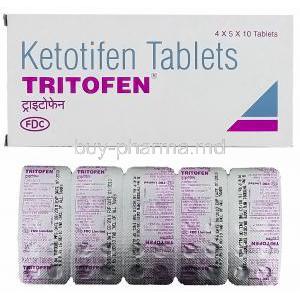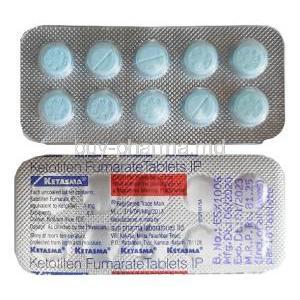Daxas
- Introduction to Daxas
- Composition of Daxas
- Mechanism of Action: How Daxas Works
- Uses of Daxas
- Off-Label Use of Daxas
- Dosage and Administration of Daxas
- Common Side Effects of Daxas
- Serious Side Effects and Reactions to Daxas
- Interaction of Daxas with Other Medications
- Warnings and Precautions When Using Daxas
- Contraindications for Daxas Use
- Careful Administration of Daxas
- Important Precautions for Daxas
- Special Considerations: Administration to Vulnerable Populations
- Overdosage: Signs, Symptoms, and Emergency Response
- Storage and Handling Precautions for Daxas
- Summary and Best Practices with Daxas Therapy
Introduction to Daxas
The field of pharmaceuticals is constantly changing, introducing treatments that aim to improve patient care. In this evolving landscape, Daxas has emerged as a crucial weapon in the fight against chronic obstructive pulmonary disease (COPD). This medication represents both innovation and the result of research into treatments for lung-related conditions.
Understanding Daxas: A Comprehensive Overview
Daxas is a medication used in the field of medicine. It is prescribed to help alleviate the symptoms of respiratory disorders. Essentially, it is a form of precision medicine designed to reduce flare-ups in patients who have COPD.
The Active Ingredient in Daxas: Roflumilast Explained
Daxas is primarily composed of Roflumilast, which is a type of medication that falls under the category of phosphodiesterase inhibitors. Roflumilast works by targeting certain molecular pathways that are known to be abnormal in respiratory diseases.
The Evolution and Approval of Daxas in Medical Use
The origins of Daxas can be traced back to clinical investigations, which unveiled its effectiveness and safety record. It received approval from authorities after undergoing rigorous scrutiny, marking a significant milestone in the treatment of COPD. The progression from its inception to its use in clinical settings exemplifies a commitment to scientific rigor and the potential for therapeutic success.

COPD
Composition of Daxas
Anatomizing Daxas: A Closer Look at Its Chemical Makeup
Daxas isn't a random combination of chemicals; it's a well-balanced mixture where each molecule is carefully chosen for a specific purpose. The fundamental chemical structure of Roflumilast is intentionally created to have therapeutic effects.
The Pharmacological Profile of Roflumilast
The pharmacological characteristics of Roflumilast demonstrate how it specifically works to address COPD. It is a balanced relationship between how it is absorbed and eliminated in the body and how it affects the body's response to the disease. This leads to clinical advantages for individuals suffering from COPD.
Mechanism of Action: How Daxas Works
Deciphering the Mode of Action: Roflumilast at the Cellular Level
The molecular mechanisms of Daxas are intricate but captivating. Roflumilast works by adjusting the signaling pathways, thereby reducing the inflammatory process that plays a crucial role in the development of COPD.
The Role of Phosphodiesterase-4 Inhibition in Disease Management
Daxass mechanism relies on suppressing the function of an enzyme called phosphodiesterase 4 (PDE 4). This action of Roflumilast helps to reduce the response, which is crucial for managing the long-term and worsening effects of COPD.
Uses of Daxas
Roflumilast, marketed under the brand name Daxas, is a medication primarily used in the maintenance treatment of severe Chronic Obstructive Pulmonary Disease (COPD) characterized by frequent exacerbations and associated with chronic bronchitis1. It is considered an, important treatment in respiratory medicine because it works to target the underlying chronic inflammation that drives COPD progression.
The active substance in Daxas, roflumilast, is a phosphodiesterase-4 (PDE4) inhibitor. PDE4 is a protein that occurs naturally in the body's cells, and roflumilast's action on it helps to reduce the activity of this protein. By inhibiting PDE4, roflumilast decreases systemic and pulmonary inflammation, which can improve disease symptoms and respiratory function23.
Roflumilast's anti-inflammatory effects are not just limited to COPD; it also has the potential to advantageously treat other respiratory diseases that involve pulmonary inflammation, such as asthma4. This medication is usually prescribed as an add-on to bronchodilator treatment and is particularly indicated for adults with a history of frequent flare-ups of COPD symptoms, such as chronic cough and sputum production5.
The clinical value of roflumilast has been reinforced by numerous preclinical and clinical studies, highlighting its significant role in the future of respiratory disease treatment. While it has not shown preclinical evidence supporting efficacy against COVID-19 infection specifically, its overall efficacy in reducing inflammation indicates a broader therapeutic potential6.
1. Drugs.com - Daxas
2. Zeepedia - Daxas
3. PubMed - Roflumifast, A review in COPD
5. Med Broadcast - Daxas
6. National Library of Medicine - Scope of adjuvant therapy using roflumilast, a PDE-4 inhibitor against COVID-19
The Primary Indications for Daxas: Treating COPD
With the rise of Chronic Obstructive Pulmonary Disease (COPD), the introduction of Daxas brings hope to those affected by this debilitating condition.

- Daxas primarily aims to reduce the frequency and severity of exacerbations in patients diagnosed with COPD, especially those with a history of chronic bronchitis.
- It also helps improve lung function, as shown by measurements, leading to an overall enhancement in the quality of life for individuals dealing with this disease.
- Moreover, Daxas works at a level to combat inflammation and slow down the progression of COPD.
- For patients struggling with cough and excessive sputum production, Daxas has proven effective in reducing these symptoms and improving day-to-day respiratory function.
Beyond the Lungs: Exploring Other Therapeutic Avenues for Roflumilast
Although Daxas is primarily known for its effectiveness in treating COPD, recent research indicates that Roflumilast may have applications in other areas of therapy as well.
- It seems that Roflumilast's anti-inflammatory properties could be beneficial in conditions such as psoriasis and psoriatic arthritis, which are characterized by inflammation and immune dysregulation.
- Furthermore, studies are being conducted to explore the usefulness of Roflumilast in treating fibrosis a condition with limited treatment options. This offers a glimmer of hope for patients affected by this condition.
- Moreover, the anti-inflammatory effects of Roflumilast might also intersect with the underlying mechanisms of asthma. This suggests that it could possibly play a role in managing asthma symptoms.
In summary, Daxas has firmly established itself as a treatment option for COPD management. Ongoing investigations are exploring its potential to expand into therapeutic areas. Its ability to suppress the process makes it versatile for managing various diseases where inflammation plays a crucial role.
Off-Label Use of Daxas
Daxas, a pharmaceutical agent containing Roflumilast as its active ingredient, has ventured beyond its original purpose. The medical community is known for repurposing medications and exploring paths that offer therapeutic possibilities. In this regard, Daxas is no exception. Has caught the attention of both doctors and researchers, who are curious and eager to investigate its potential.
Investigating the Unapproved Uses of Roflumilast
The use of Roflumilast for purposes not officially approved showcases the changing nature of medical science.
- Researchers have been exploring its applications beyond its intended use, such as in treating psoriasis, a skin condition characterized by excessive skin cell growth.
- Roflumilast has shown effectiveness in alleviating symptoms associated with plaque formation. In the field of dermatology, it is also being considered for its inflammatory properties in managing atopic dermatitis.
- Moreover, there is increasing evidence suggesting that it may be beneficial in addressing inflammation in conditions like cystic fibrosis and pulmonary fibrosis, both of which involve significant fibrotic processes.
Although the use of Roflumilast in these areas hasn't received approval, it serves as a compelling example of the drug's versatility and its potential to alleviate conditions resulting from systemic inflammation.
Clinical Trials and Emerging Off-Label Therapies Involving Daxas
The introduction of Daxas into trials for conditions beyond its approved use is a sign of its adaptable therapeutic potential. Clinical trials serve as a testing ground to evaluate the effectiveness of Roflumilast in treatment areas.
- Ongoing trials are examining how it can help manage acute exacerbations of COPD, aiming to reduce the need for hospitalization.
- Preliminary research suggests that the drug could be a candidate for treating lung cancer by leveraging its mechanism to potentially inhibit tumor development.
- There is growing interest in exploring the possibility of using Roflumilast to treat metabolic syndromes, considering its impact on cyclic adenosine monophosphate (cAMP) within cells.
These efforts, occurring within the context of evaluation, open up possibilities for expanding Daxa's therapeutic applications. They serve as evidence of the pursuit to broaden medical treatments and address a wider range of health conditions.
Dosage and Administration of Daxas
Standard Dosage Guidelines for Daxas
The way Daxas is administered, which is also known as Roflumilast, requires careful attention to detail. Usually, adult patients are advised to take 500 micrograms of the medication once a day. This dosage has been determined as optimal because it effectively achieves the desired response while minimizing the chances of any negative reactions. It is recommended to take it without meals, allowing for flexibility in incorporating it into daily routines. It is crucial to follow the prescribed dosage to ensure that therapeutic levels of the drug are maintained within the body's circulation system.
Personalizing Daxas Treatment: When to Adjust Dosage
Adjusting the amount of Daxas prescribed may be required based on how each individual patient responds or their existing medical conditions. When it comes to liver problems, it's important to be cautious and often reduce the dosage. The same careful approach should be taken for patients who have experienced immune system issues or recent infections.
Common Side Effects of Daxas
Enumerating the Frequent Adverse Reactions to Daxas
Daxas, while providing benefits, can cause a range of side effects. Some reported ones include experiencing diarrhea and weight loss due to its impact on the gastrointestinal system. Additionally, it may lead to headaches and dizziness that could potentially affect activities. Nausea is another side effect, which may or may not be accompanied by vomiting.
Managing Side Effects: Tips for Patients and Caregivers
Effective management of side effects relies on an approach wherein patients and caregivers play a crucial role. It is important to follow recommendations, ensure proper hydration, and promptly inform healthcare providers about any ongoing adverse events. These strategies are fundamental in addressing side effects.
Serious Side Effects and Reactions to Daxas
Identifying and Responding to Severe Adverse Events
Although rare, it is important to seek medical attention if you experience severe adverse events related to Daxas. These events may include symptoms such as severe difficulty breathing, swelling in the face or throat (angioedema), or changes in mood that require evaluation.
Risk Mitigation Strategies for Daxas-Related Complications
It is crucial for healthcare professionals to take steps to closely monitor patients who have factors that increase their risk of cardiovascular events. Before and during the treatment with Daxas, clinicians are advised to consider the balance between benefits and risks.
Interaction of Daxas with Other Medications
Potential Drug Interactions: A Comprehensive List
The way Daxas works in the body allows it to interact with different medications. It's important to be cautious when combining Daxas with inhibitors of CYP3A4 and CYP1A2 enzymes, as they can increase the amount of Daxas in the bloodstream. So, it's crucial to be vigilant when using these medications together.
How to Safely Combine Daxas with Other Therapies
To ensure the use of Daxas, alongside other treatments, it is important to take a comprehensive approach. This involves reviewing the patient's current medications, ensuring proper timing of drug administration, and closely monitoring for any potential interactions or combined effects.
Warnings and Precautions When Using Daxas
Highlighting Critical Safety Information for Daxas Patients
It is extremely important to communicate the essential safety information that is relevant to patients who are prescribed Daxas. It is crucial to highlight the need for patients to be aware of any hypersensitivity they may have towards Roflumilast or any other ingredient in the medication. Additionally, patients should be informed about the possibility of experiencing events and advised to seek immediate medical consultation if any symptoms arise.
Understanding the Risk Factors and Safety Profiles
The safety characteristics of Daxas are shaped by a combination of factors that increase the risk.
- People who have a tendency towards weakened systems may encounter higher risks.
- It is crucial to monitor weight because Daxas has the potential to cause weight loss.
Contraindications for Daxas Use
To effectively navigate the landscape of contraindications related to the use of Daxas, it is crucial to adopt a meticulous and well-informed approach. Patients with moderate to liver impairment are considered absolute contraindications since the metabolism of the drug, in such cases, can exhibit unpredictable changes.
The Importance of Medical History Review Prior to Daxas Administration
Before starting Daxas, it is crucial to examine a patient's medical background. It is not just a suggestion but an absolute necessity. Previous instances of disorders, for example, can increase the chances of experiencing neuropsychiatric side effects.
Careful Administration of Daxas
Guidelines for Special Populations: Renal and Hepatic Considerations
Certain specific groups of people with kidney or liver problems may need customized instructions. These individuals might require changes in dosage. In some cases, it may be recommended to avoid using Daxas altogether.
Titration and Monitoring: Ensuring Safe Administration
It is crucial to follow the principles of titration and careful monitoring to minimize the dangers related to administering Daxas. Regularly evaluating liver enzymes and keeping an eye out for any indications of toxicity play a vital role in ensuring patient safety.
Important Precautions for Daxas
Counseling Patients on Lifestyle Adjustments While on Daxas
It is important to emphasize the importance of making lifestyle changes while taking Daxas. This includes making adjustments, engaging in regular exercise, and avoiding tobacco use. These actions can improve the effectiveness of the treatment. Reduce any potential side effects.
Avoiding Potential Triggers and Interactions
It is crucial to inform patients about triggers and interactions as part of Daxa's stewardship. Being aware of the impact that specific foods or over-the-counter medications can have on causing interactions is extremely important.
Special Considerations: Administration to Vulnerable Populations
Administration to the Elderly: Adjustments and Monitoring
When administering Daxas to patients, it's important to take a cautious approach. You may need to adjust the dosage based on any decline in liver, kidney, or heart function. It's also crucial to monitor for any side effects that could worsen their existing conditions.
Administration to Pregnant Women and Nursing Mothers: Weighing the Risks
When it comes to women and breastfeeding mothers, it is crucial to carefully assess the possible risks versus the expected benefits before using Daxas. Since there aren't studies available, it is important to use caution and only consider using Daxas if the potential benefits outweigh any potential risks to the baby or unborn child.
Administration to Children: Safety and Efficacy Considerations
The safety and effectiveness of giving Daxas to children have not been definitively established. As a result, doctors should be careful. Use their judgment when considering whether it is appropriate to prescribe this medication to pediatric patients taking into account the limited information available.
Overdosage: Signs, Symptoms, and Emergency Response
Recognizing Overdosage of Daxas and Immediate Actions
If you suspect that someone has taken too much Daxas, it is important to pay attention to certain signs like stomach discomfort dizziness, and changes, in mental state. The immediate steps to take include stopping the use of the medication and providing care and support for the symptoms.
Treatment Protocols for Roflumilast Overdose
The treatment procedures for an overdose of Roflumilast mainly involve providing support and care. This may include actions like washing the stomach, giving activated charcoal, and closely observing signs in a medical setting to minimize the impact and stop additional absorption.
Storage and Handling Precautions for Daxas
Proper Storage Conditions to Preserve Daxas Efficacy
To ensure that Daxas remains effective, it is important to store it.
- Please store it at room temperature.
- Protect it from moisture and direct sunlight.
- Remember to keep the container closed when you're not using it.
Handling Precautions: Ensuring Patient and Caregiver Safety
To ensure the safety of both the patient and caregiver when handling Daxas, it is important to follow guidelines to prevent any contamination or accidental exposure. Remember to wash your hands before and after handling the medication, and if there is a possibility of direct contact with the drug, make use of protective gloves.
Summary and Best Practices with Daxas Therapy
Wrapping Up: Key Takeaways for Effective Daxas Use
Successful utilization of Daxas relies on following the recommended doses, understanding the requirements of vulnerable groups, and taking prompt action in case of accidental overdose. These important points strengthen the effectiveness of the treatment while prioritizing well-being.
Implementing Best Practices for Optimal Therapeutic Outcomes
To ensure the possible results, with Daxas it is important to follow certain guidelines. These guidelines include educating patients regularly checking for any negative effects and strictly adhering to proper storage and handling protocols.














